Isabelline and Other Colours
Lily Brooke, London | 24th April - 24th May 2019
Isabelline and Other Colours is an exhibition that investigates the poetic interconnectedness of things of the same colour – specifically a pale or light yellow.
Despite ‘pale’ yellow being used as an umbrella term, it can specifically can refer to several colours: Isabelline, antimony, flaxen, sulphur and primrose. These shades of yellow appear in nature, the pharmaceutical industry, design choices in fashion and the decorative arts, and legal noticesFor this exhibition, Seaward has collected objects and explored sources from disparate socio-historic contexts, from Jasperware to Xanax – their unifying factor being their colour. Using a conceptually holistic approach, the artist demonstrates how everything in the show is connected to one another in a somewhat absurd exercise, but in doing so proves the innate poetic relationships things have embedded within them.
From these relationships spring histories and tales, from a Spanish Queen who refused to wash her underwear to Charles Darwin’s penchant for eating exotic meats.
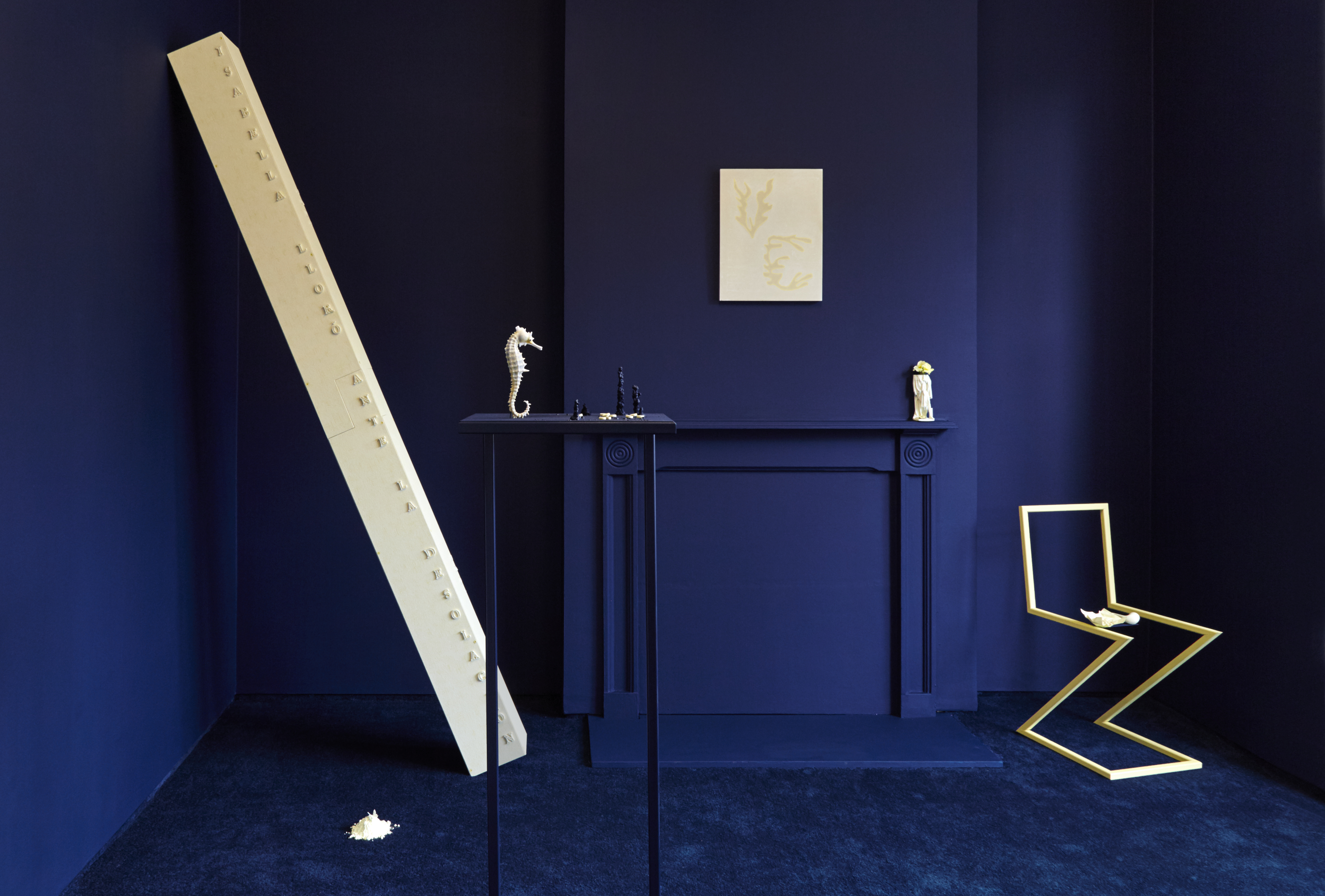
 Hippocampus
Hippocampus2019
Alprazolam (Xanax) tablets and 3D printed gypsum seahorse on painted mild steel plinth
1.
Yellow is the colour the brain processes quickest. 2.
In the 1960s the pharmaceutical industry started adopting coloured drugs in order to increase the synaesthetic effects on users. Yellow was often chosen as it produces a ‘calming’ effect 3.
Alprazolam (branded as Xanax) works by increasing the serotonin output in the user’s brain. Serotonin is produced by the hippocampus, an ancient region of the brain involved in the formation of new memories. 4.
The hippocampus is named after its resemblance to the seahorse. The genus Hippocampus comes from the ancient Greek hippos meaning ‘horse’ and kampos meaning ‘sea monster’ 5.
Hippocampus Kuda is a yellow seahorse native to the Indo-Pacific.
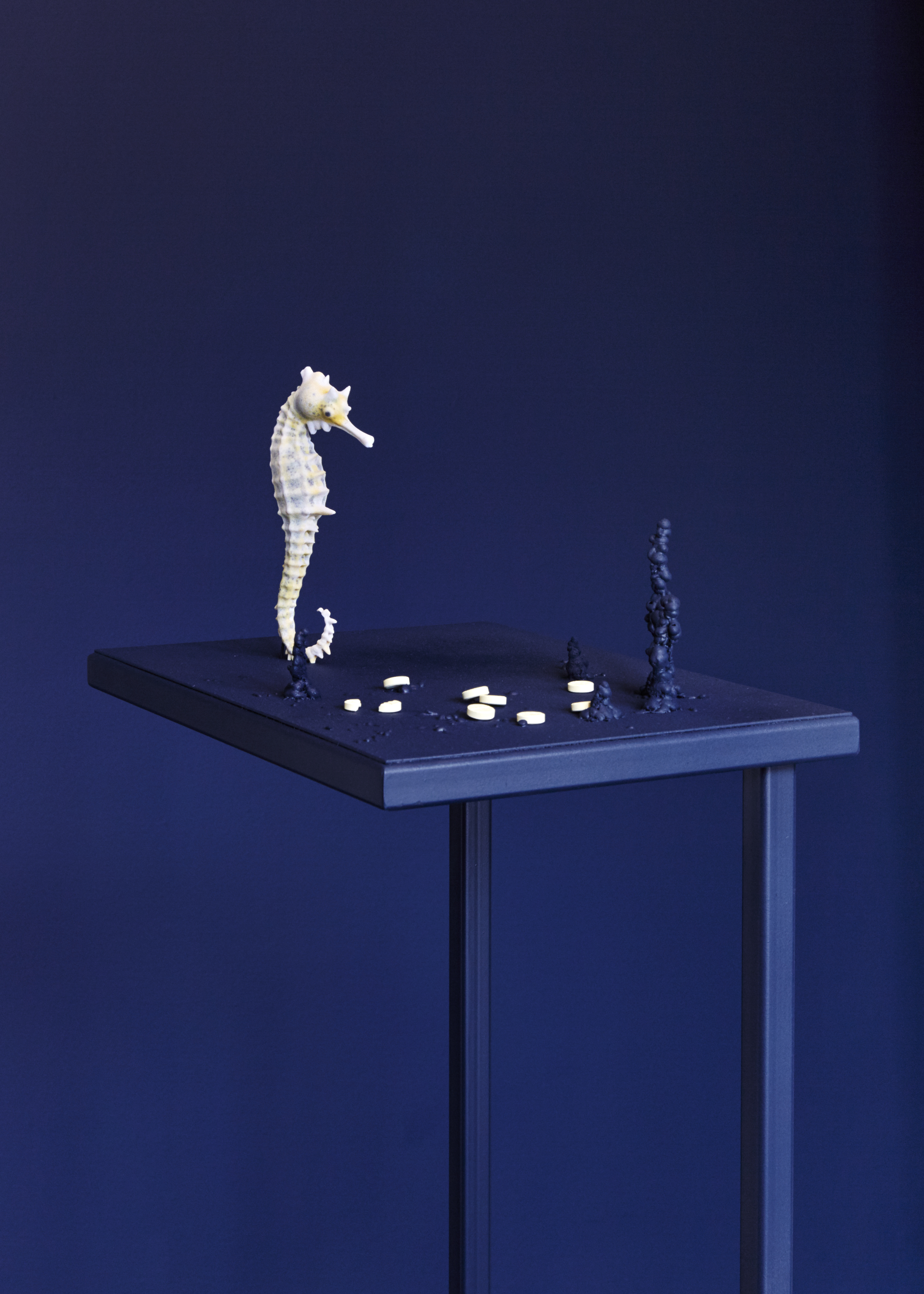


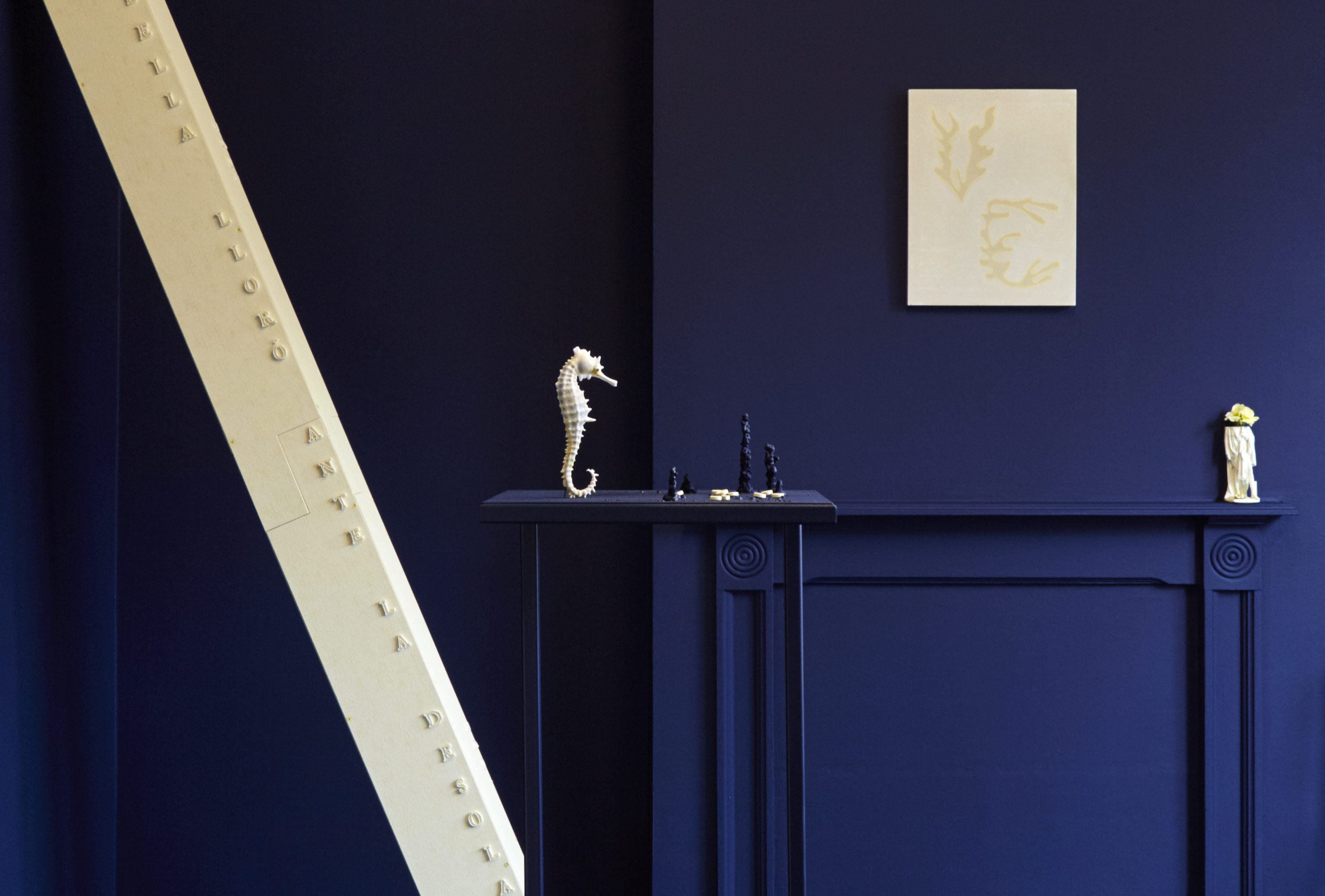
 Lunar Society
Lunar Society2019
Jasperware trinket box by Josiah Wedgwood, mannequin hand with applied fake nails, 3D printed gypsum armadillo
6.
The last leg of Charles Darwin’s voyage on the Beagle took him through the Indo-Pacific. In 1836 he travelled to the Cocos and Keeling Islands followed by Mauritius. 7.
Armadillos were a key aspect of Darwin’s Theory of Evolution owing to their similarity to fossils he found in South America. He was also an adventurous eater, and Armadillos were rumoured to be one of his favourite exotic meats. 8.
Josiah Wedgwood was Charles Darwin’s grandfather. The prolific potter and inventor of the iconic Jasperware was also a prominent abolitionist, and his Am I Not a Man and a Brother? medallion was purported to be the most famous image of a black person in all of the 18th Century art. 9.
More than after 250 years after the end of the transatlantic slave trade there are still 41 Million people still trapped in some form of slavery in the world today. In the UK the most prevalent ‘employers’ of modern slaves are car washes and nail bars.




2019
Reebok Royal Glide shoes, American cotton, painted mild steel frame
10.
In the 19th century, Bolton was one of the largest and most productive centres of cotton production in the world. This rapid growth was fed by the import of raw American cotton, predominantly from slave plantations. The import of cotton helped facilitate the industrial revolution, itself propped up by the slave economy. 11.
Reebok was founded in Bolton by Joe and Jeff Foster in 1958. 12.
When Joe Foster was a boy, he won a South African dictionary in a running race. Years later when he and his brother were trying to come up with a name for their new footwear brand, they looked in the dictionary and found Reebok - with Dutch Afrikaans spelling as opposed to the usual spelling: Rhebok. 13.
Afrikaans developed from Dutch vernacular brought to South Africa by Dutch settlers arriving from the 17th Century. In 1853 the Republic of Utrecht was founded in what is now the province of KwaZulu-Natal in South Africa, and named after the medieval town and centre of Catholicism in Holland.


 Dutch Chairs
Dutch Chairs2019
Painted mild steel, 3D printed gypsum pipe, card, jasmine flowers
14.
Architect and designer Gerrit Rietveld was born in Utrecht, Holland, and completed his celebrated Rietveld Schröder House there in 1924. It is known as the only true example of De Stijl architecture. The house, along with his Zig Zag chair cemented Rietveld’s place as one of the main proponents of De Stijl. 15.
De Stijl was founded in Holland in 1917. They considered yellow one of only three true colours. Their manifesto and early journals were printed on yellow paper. 16.
Rietveld designed the Van Gogh museum in 1963 but died a year later. The building was not completed until 1973. 17.
Van Gogh’s Chair was painted by the artist in 1888 and features his trademark pipe and pouch of tobacco. It was one of his first attempts to articulate light and depth of form through the use of pure colour. The colour palette is dominated by Naples and cadmium yellow. When Van Gogh was in London in 1873 he lived at 87 Hackford Road, 15 minutes from this gallery.



 Flowers (after Matisse) I
Flowers (after Matisse) I2019
Cast concrete panel with inlaid acrylic
18.
In 2015 researchers from the European Synchrotron Radiation Facility analysed samples or the cadmium yellow used by Van Gogh and Matisse and found that the colour is slowly fading away due to the use of cadmium sulphide which oxidises in light. 19.
Matisse often painted using yellow – the colour was a key component of the palette he employed as a young Fauve and would become an omnipresent hue in his life’s work. The motifs employed in the concrete panels are taken from a yellow chalk drawing he completed for his friend and patron Max Pellequer. 20.
In 1898 Matisse travelled to London on the advice of Pissarro to look at the Turners in the National Gallery. Matisse was captivated.

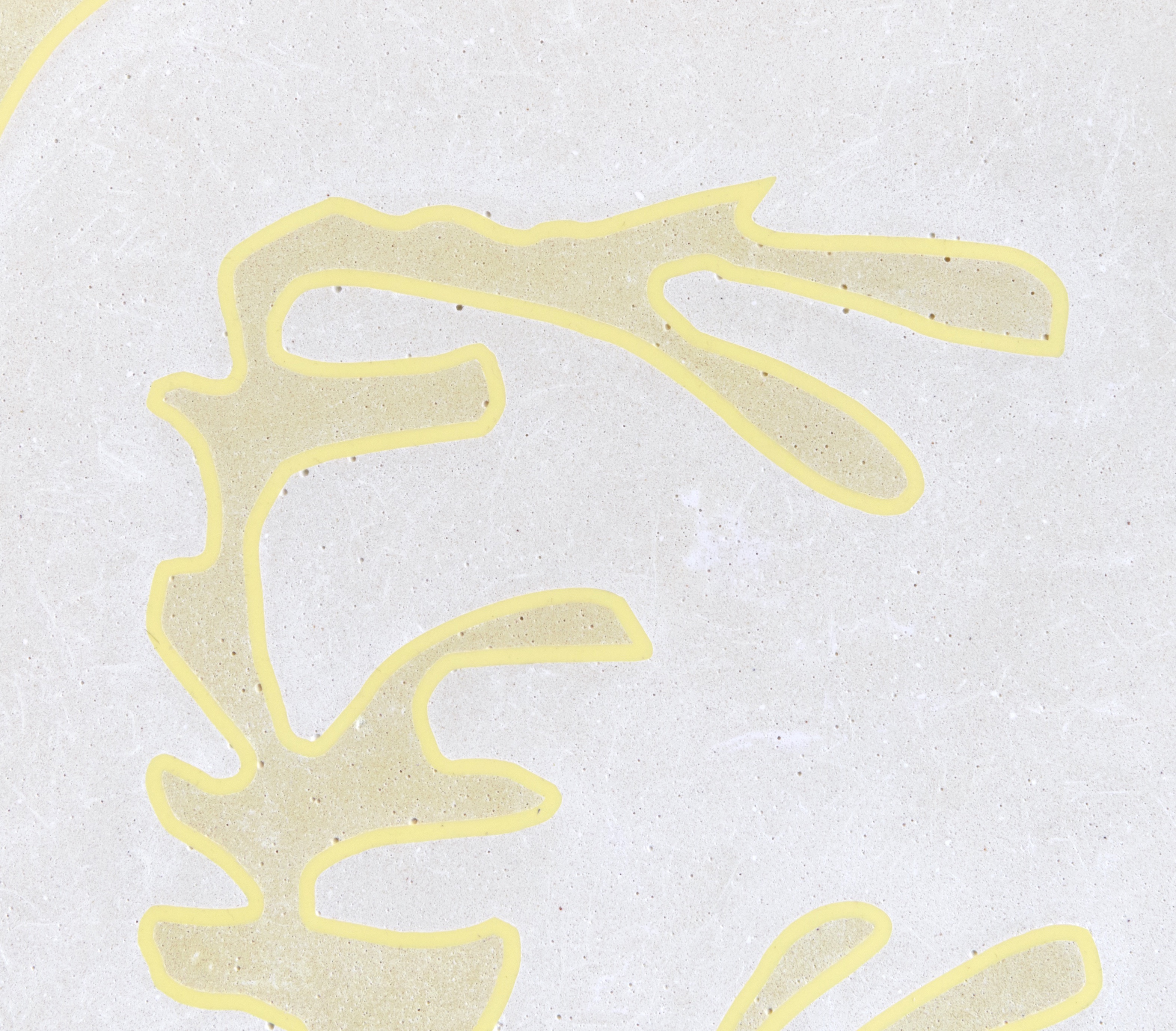

2019
3D printed PLA (Benjamin Disraeli, Earl of Beaconsfield), Primrose League lapel pin, Primroses This work is realised when it is burnt on Halloween 2019
21.
Benjamin Disraeli often spent what little time he had off from being prime minister by visiting the National Gallery. Amongst his favourite works were those by Turner – it was said he would stand and view them in silent contemplation. 22.
Benjamin Disraeli’s favourite flower was the primrose, and Queen Victoria would often send bunches of them collected from the grounds of Windsor. The 19th of April, the date of his death, is known as Primrose day. The Primrose League was founded in 1883 in his honour and with the mission to uphold the Conservative cause. He is therefore partially responsible for Brexit. 23.
Disraeli’s father, Isaac, was a scholar and man of letters. In 1791 he wrote a chapter in a book entitled Anecdotes of Fashion in which appeared one of the first examples in the English language of the origin of the colour Isabelline.


2019
Wallpapered particle board, 3D printed PLA, screws
24.
Isabella Clara Eugenia was born in 1566 and daughter of Philip II of Spain. At the age of 33, she married Albert VII, Archduke of Austria and became the Governor of the Netherlands on behalf of the Spanish Crown. Ostend was the only possession of the Dutch Republic in Flanders and its capture was of great strategic importance to the Spanish. The siege was started in 1601 and believing her husband to get the job done quickly, Isabella vowed to not wash her underwear until the siege was over, thinking it would last a matter of days. The siege lasted three years and the final colour of her underwear was said to be a pungent muted yellow and became known as Isabelline. 25.
The siege was one of the longest and bloodiest in world history with over 100,000 people killed. When Isabella and Albert first entered the city after the Dutch surrender, Isabella is said to have ‘wept at the desolation’ – ‘Isabella lloró ante la desolación.’ 26.
Isabelline is described as a pale yellow sometimes with brownish hues. It is analogous to the colour of Post-It® Notes.

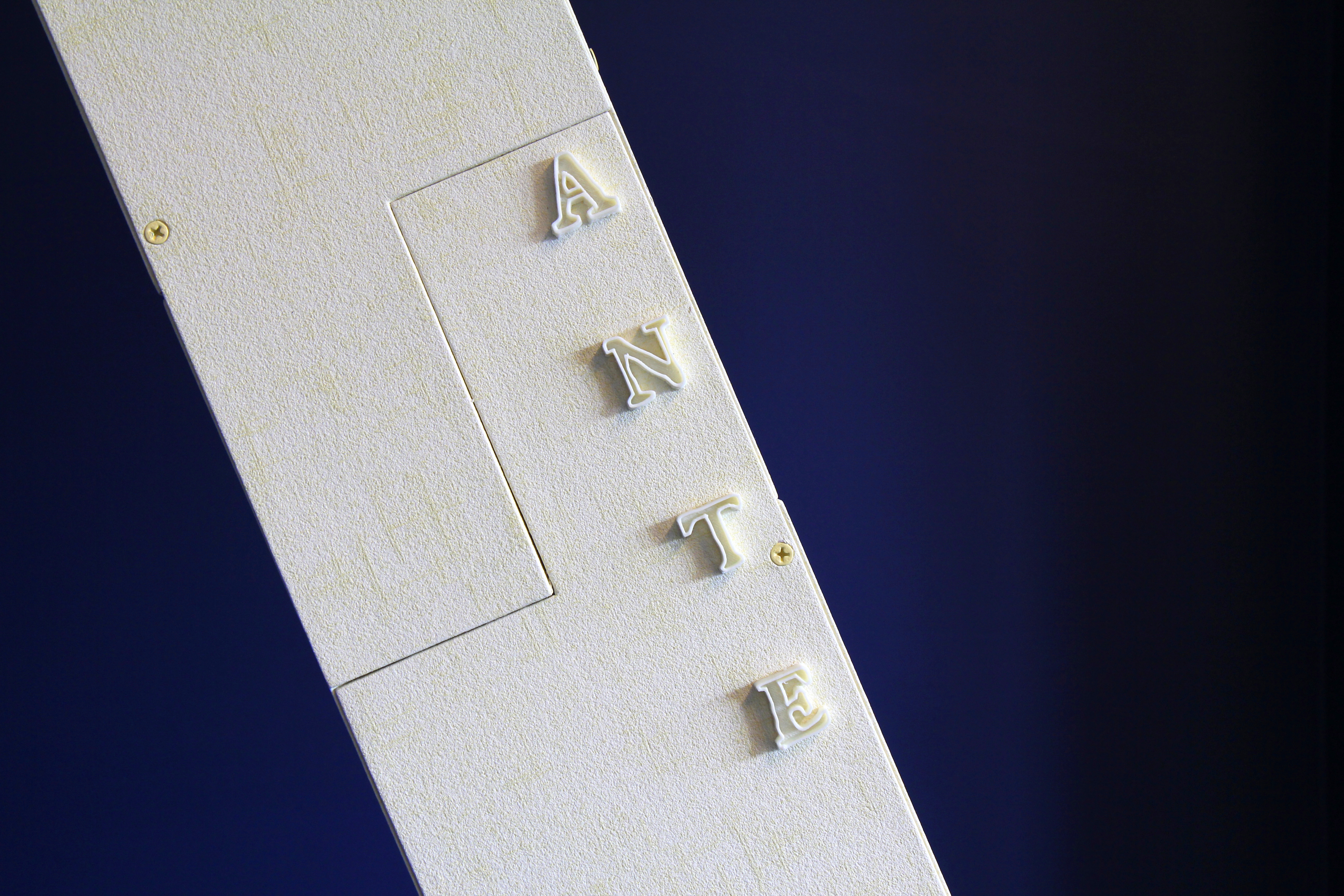
 Pure Accident
Pure Accident2019
3M Post-it® Note, 3D printed PLA (Chi Ro symbol)
27.
In 1968, Dr Spencer Silver, a chemist at 3M was trying to invent a super-strong adhesive but created a low-tack repositionable one by accident. For six years 3M were unable to come up with a use for the glue until one of Dr. Silver’s colleagues suggested applying it to paper as he was often frustrated with the bookmarks in his hymn book slipping. Whilst they were developing the product, they ran out of paper, and so went to the office next door. They borrowed paper from a legal pad, which traditionally had pale yellow paper and the colour has been used ever since.

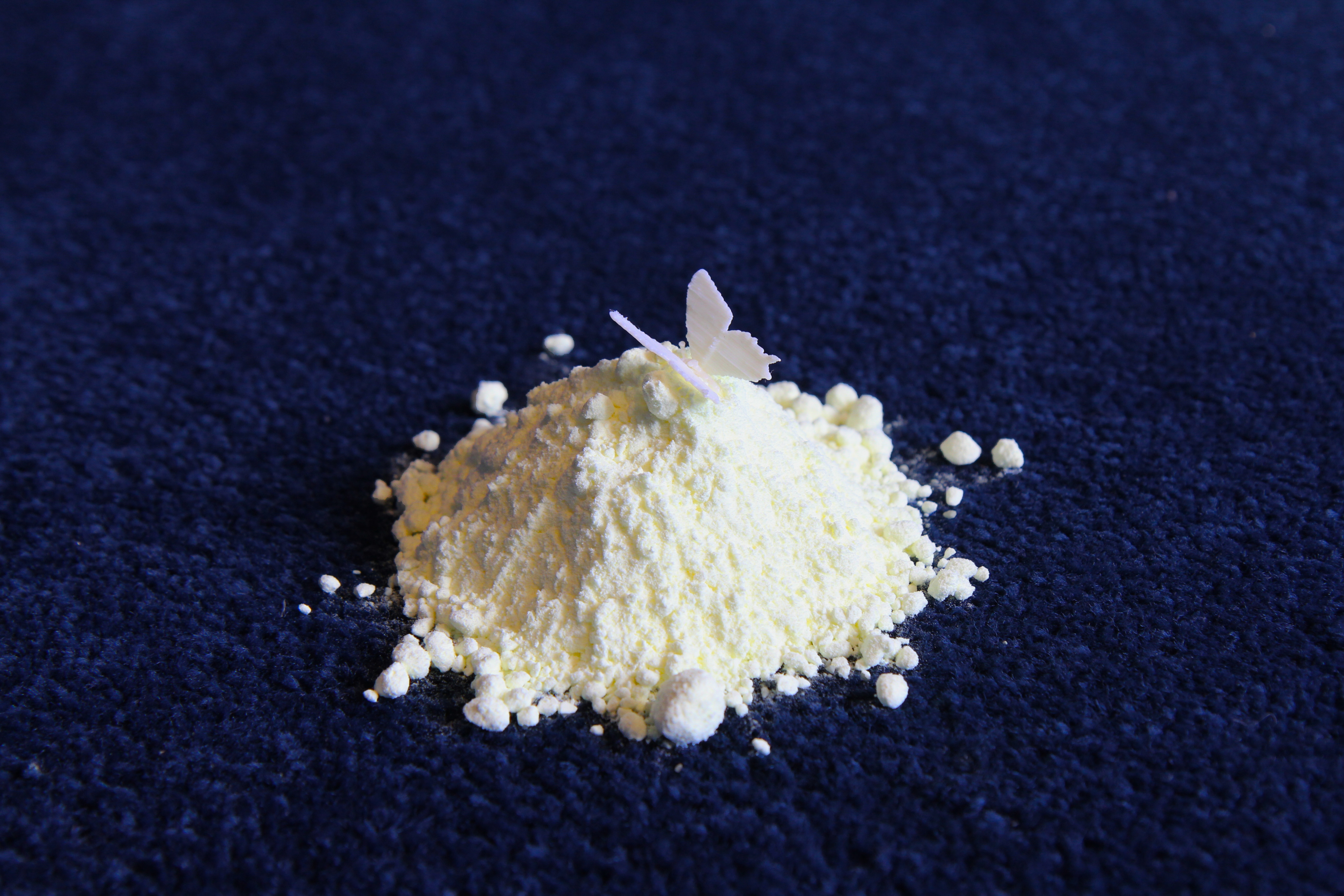 Brimstone and Butterfly
Brimstone and Butterfly2019
Sulphur pile with 3D printed PLA butterfly
28.
Both the Bible and the Quran make many references to Brimstone, usually employed as an idiomatic expression referencing God’s wrath. We now know this substance as sulphur and its unique natural yellow colour can also be found in nature including the Common Brimstone found in Europe and Asia.

2019
Appropriated planning application notice to demolish the artist’s studio
29.
There is no consensus as to why legal pads have yellow paper. Invented by Thomas Holley in 1888 from scrap paper he bought from mills, one theory is that yellow dye was used to hide the fact that the pads were made from scraps of varying age and quality, and yellow was the cheapest or most readily available dye at the time. Another is that pale yellow was used due to its stimulating effects on the user’s intellect. 30.
This pale yellow hue has now become to be the de facto colour of public legal notices, from Interpol global alerts for missing persons, to official planning notices in the UK, such as a Southwark council notice to demolish the artist’s studio.